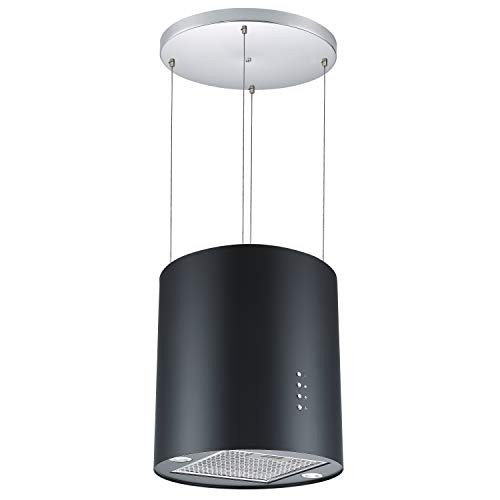
Extractor Hoods For Kitchens
Add a review FollowOverview
-
Founded Date September 28, 1960
-
Sectors Eng technicians audio/video
-
Posted Jobs 0
-
Viewed 5
Company Description
What You Should Be Focusing On Improving Cooker Extractor Hood
Understanding Cooker Extractor Hoods: A Comprehensive Guide
In modern kitchens, the cooker extractor hood is more than simply a device; it is an essential component that ensures a comfortable and clean cooking environment. This blog post dives deep into what cooker extractor hoods are, their functions, various types, key factors to consider for selection, and often asked questions. Whether homeowners are renovating their kitchens or just seeking to upgrade their cooking home appliances, understanding the role of an extractor hood can assist make informed choices.
What is a Cooker Extractor Hood?
A cooker extractor hood, likewise referred to as a range hood or kitchen hood, is a gadget installed over the cooktop or stove. Its primary function is to aerate the kitchen by removing air-borne grease, smoke, steam, and odors produced during cooking. This not only improves air quality however likewise assists in preserving the kitchen’s cleanliness.
Functions of Cooker Extractor Hoods
The main functions of an extractor hood include:
- Filtration: Removing airborne particles and smells through filters.
- Ventilation: Providing fresh air by sucking in stagnant air, grease, and smoke.
- Lighting: Offering lighting over the cooking area for much better exposure.
- Heat Regulation: Preventing excess heat from collecting in the kitchen.
Types of Extractor Hoods
Cooker extractor hoods come in different types, each fit for various kitchen styles and cooking styles. Below is a table summarizing the various types:
| Type | Description | Pros | Cons |
|---|---|---|---|
| Wall-Mounted | Attached to the wall above the stove. | Efficient suction, space-saving | Requires wall space, setup can be complex |
| Under-Cabinet | Fits beneath cabinetry. | Discreet, hassle-free for small spaces | Might have lower suction power |
| Island | Suspended from the ceiling, perfect for kitchen islands. | Aesthetic appeal, effective ventilation | More pricey, may need expert installation |
| Downdraft | Built into the cooktop, rises during usage and pulls back when not needed. | Sleek style, saves overhead area | Usually less reliable than conventional hoods |
| Filterless | Utilizes innovative filtering technology, lowering grease and smells without conventional filters. | Less upkeep, longer life-span | Usually higher price point, may not fit all kitchen styles |
Key Considerations for Choosing a Cooker Extractor Hood
When selecting a cooker extractor hood, numerous elements need to be thought about to optimize efficiency and make sure suitability for private kitchen requirements:
1. Size
Make sure the hood is at least as wide as the cooktop. Optimum sizing is necessary for efficient air capture. For a better fit, think about:

- Standard cooktops: 30 inches hoods
- Professional cooktops: 36 inches or bigger hoods
2. Suction Power (CFM)
The air flow of the hood is determined in Cubic Feet per Minute (CFM). A greater CFM indicates much better ventilation, which is crucial for heavy cooking.
Advised CFM:
- Light cooking (e.g., boiling, steaming): 200-300 CFM
- Moderate cooking (e.g., sautéing, frying): 300-600 CFM
- Heavy cooking (e.g., barbecuing, wok cooking): 600+ CFM
3. Ducted vs. Ductless
- Ducted: Ventilates outdoors, highly efficient however requires setup of ductwork.
- Ductless: Filters air and recirculates it back into the kitchen; setup is much easier but may not be as efficient.
4. Noise Level (Sonnes)
Pay attention to the noise level, especially in open-concept homes. Search for hoods that operate quietly, preferably producing less than 60 decibels on high speed.
5. Style and Aesthetics
Choose a hood that complements the total kitchen decoration. Options can range from modern stainless-steel to standard designs that blend flawlessly.
6. Reduce of Maintenance
Consider designs with removable, dishwasher-safe filters to alleviate cleansing efforts. Some designs include filter pointers or indicators to notify users when a modification is required.
Advantages of Installing a Cooker Extractor Hood
Including a cooker extractor hood into the kitchen provides numerous significant benefits:
- Improved Air Quality: Filters and flows fresh air, lowering cooking odors.
- Improved Comfort: Minimizes heat and steam retention.
- Cleaner Kitchens: Reduces grease accumulation on cabinets and walls.
- Visual Appeal: Modern hoods function as decorative elements.
Often Asked Questions (FAQ)
1. How typically should I clean my cooker extractor hood?
It is recommended to clean up the filters every 1-3 months, depending on usage frequency. Regular cleaning avoids grease accumulation, ensuring ideal performance.
2. Can I install a cooker extractor hood myself?
While some models are developed for easy DIY installation, complex ductwork or heavy models might need professional installation to guarantee safety and efficiency.
3. How do I identify the best CFM for my kitchen?
Step your cooktop dimensions and consider cooking designs. A basic rule is 1 CFM for each 100 BTUs of the stove’s maximum heat output.
4. What kind of hood is best for a small kitchen?
Under-cabinet hoods or downdraft models are perfect for small kitchens due to their compact style, saving important area without sacrificing function.
5. Are all extractor hoods noisy?
No, noise levels vary significantly. Look for hoods that supply a greater CFM at lower decibels for a quieter performance.
Investing in an appropriate cooker extractor hood is essential for developing a cleaner and more comfy cooking environment. By comprehending the different types, functions, and crucial considerations in picking a hood, property owners can considerably improve their kitchen experience. With the best extractor hood in location, you’ll delight in fresher air, minimized odors, and a more inviting kitchen area that’s as practical as it is stylish.
